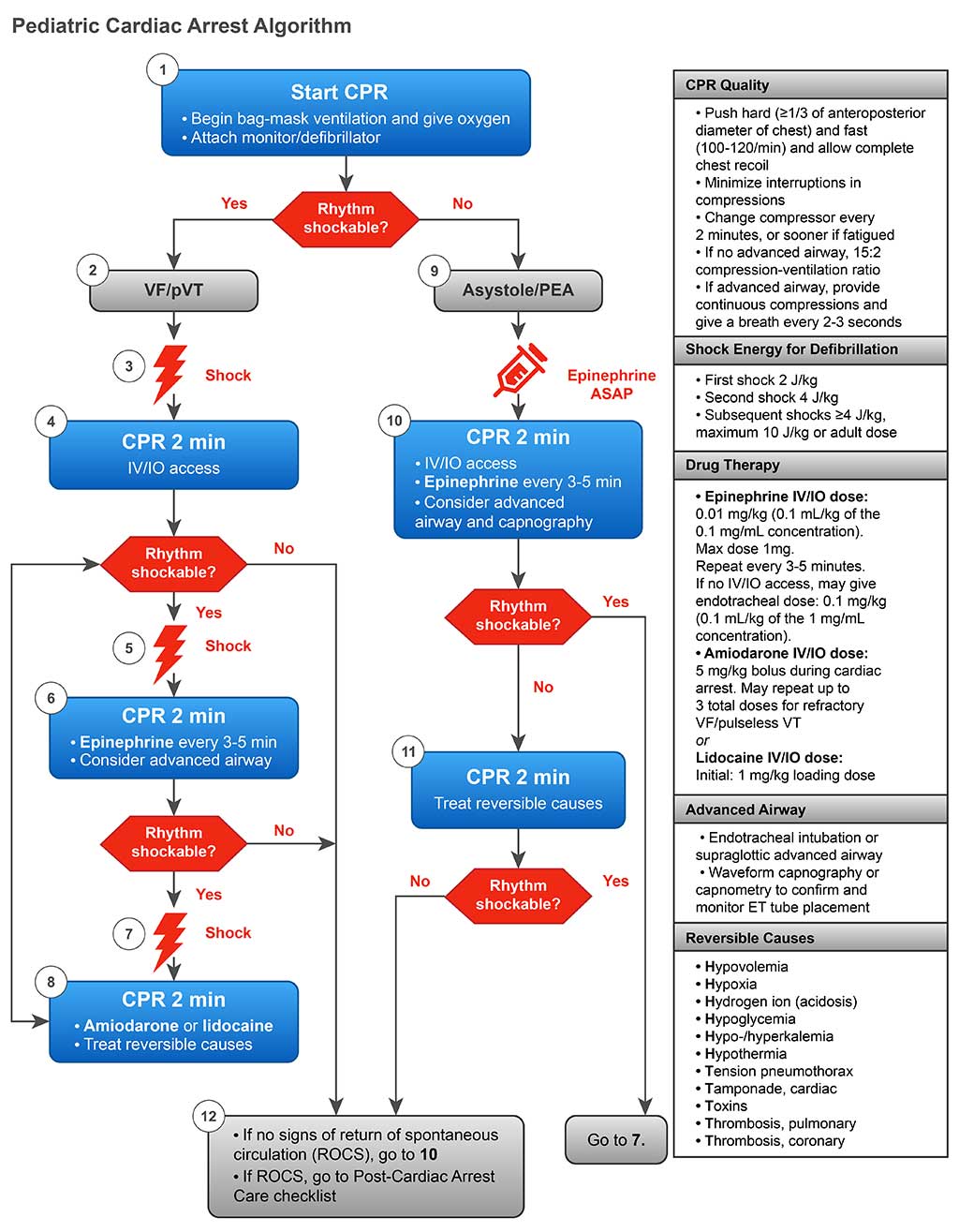As you study for your Pediatric Advanced Life Support, or PALS, certification, you’ll need to memorize all the algorithms used during emergencies, including for cardiac arrest. With that information embedded in your mind, you can respond appropriately to the situation at hand and promote the best possible outcomes for your patients. Ready to learn about the cardiac arrest PALS algorithms? Here’s what you need to know.
1. Verify Scene Safety
Upon noticing that a patient is in distress, your first course of action is checking the safety of the scene. You’ll need to see if they are unresponsive, shout out for help from anyone nearby, and call emergency medical services, or EMS, for additional support. Only once the scene is safe should you move through the rest of the PALS algorithm for cardiac arrest.
2. Check for Breathing
Your next step is checking for breathing. If the patient is breathing, you just have to monitor their status and wait for EMS to arrive. If they are not breathing, check their heart rate to see if it’s under 60 beats per minute, or BPM, and look for poor perfusion.
For patients with adequate perfusion and a heart rate above 60 BPM, just give two rescue breaths every three to five seconds. Otherwise, you should immediately start chest compressions as well. Also, remember to check their pulse every two minute as you perform chest compressions and rescue breaths.
3. Confirm if You Witnessed the Patient's Collapse
If your patient is not breathing or is only gasping for air and does not have a detectable pulse, you’ll need to confirm if you witnessed their collapse. If you witnessed their collapse, grab the automated external defibrillator, or AED, and activate EMS. You will then need to follow the prompts in the AED to try to get their heartbeat back into rhythm.
For patients where you did not witness their collapse, start CPR using a 30:2 ratio if you’re on your own. For times when there are two rescuers, use a 15:2 ratio instead. You’ll want to use an AED as soon as it arrives on scene and activate the EMS after two minutes. If you’re alone and the AED has not arrived, go get it after two minutes of CPR.
4. See if a Shockable Rhythm is Detected
While following the AED prompts, you will check for a shockable heart rhythm. If the AED does not detect a shockable rhythm, just continue CPR while you wait for help. Continue to recheck the heart rhythm every two minutes.
Once the AED detects a shockable rhythm, you will want to give one shock, and then continue with compressions right away. The AED will continue to check the heart rhythm and prompt additional shocks as needed to stabilize the patient. After EMS arrives, you can let them take over care of the patient and facilitate transfer to the hospital.
When you follow the cardiac arrest PALS algorithms as written, you effectively work toward achieving a successful resuscitation. Moving through each step allows you to maximize the time spent delivering quality compressions while using the defibrillator to restore the proper heart rhythm.

